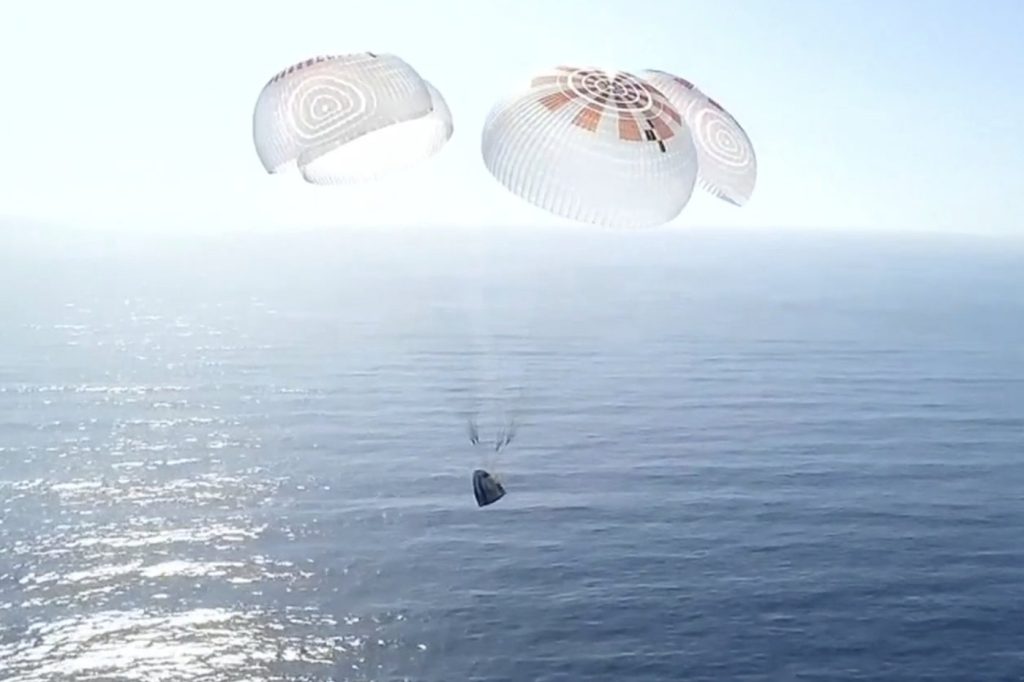CAPE CANAVERAL, Fla. (AP) — On Friday, four space tourists successfully completed their private polar expedition, returning to Earth after a 3 1/2-day mission that included orbiting both the North and South Poles. The group splashed down in the Pacific Ocean off the Southern California coast, marking a historic achievement in space travel. This mission was notable not only for its unique orbit trajectory but also as the first human spaceflight to orbit the globe above the poles and the first Pacific splashdown for a space crew in 50 years.
The trip was chartered by Bitcoin investor Chun Wang, who invited three other participants: Norwegian filmmaker Jannicke Mikkelsen, German robotics researcher Rabea Rogge, and Australian polar guide Eric Philips. Wang, now a citizen of Malta, chose to keep the cost of the expedition private. The private mission was executed using a SpaceX Dragon capsule, which was fitted with a domed window, enabling the crew to enjoy 360-degree views of the polar regions and beyond. After launching from NASA’s Kennedy Space Center on Monday night, the crew captured breathtaking vistas of Earth from an altitude of approximately 270 miles (430 kilometers).
During their journey, the crew members encountered space motion sickness, a common issue for astronauts. However, they reported feeling better by the start of the second day, which allowed them to fully enjoy the spectacular views, particularly when they opened the window cover above the South Pole. Mikkelsen, who is passionate about cinematography, utilized a wealth of camera equipment, documenting their epic journey throughout the mission.
Wang and his team also contributed to scientific research during their time in space. They conducted the first medical X-rays in space and performed around two dozen additional science experiments, furthering the knowledge surrounding human activities in orbit. They chose to name their mission "Fram2" in honor of the Norwegian ship that famously transported explorers to the polar regions more than a century ago. A small piece of the original ship's wooden deck accompanied them, tying their modern expedition to historical exploration.
SpaceX's decision to change its splashdown site to the Pacific was driven by safety considerations. The company indicated that the new locations would help ensure that any debris remaining from the capsule does not endanger populated areas. The last crew to return from space to the Pacific Ocean were three NASA astronauts involved in the 1975 Apollo-Soyuz mission, making this recent splashdown a significant event in the history of human spaceflight.
This latest mission illustrates the growing interest and capability for private individuals to participate in space exploration, pushing the boundaries of what is possible in the realm of commercial space travel. With increasing advancements in technology and support from organizations like SpaceX, the future of space tourism appears bright, ushering in an era where extraordinary adventures become accessible to more than just professional astronauts.










